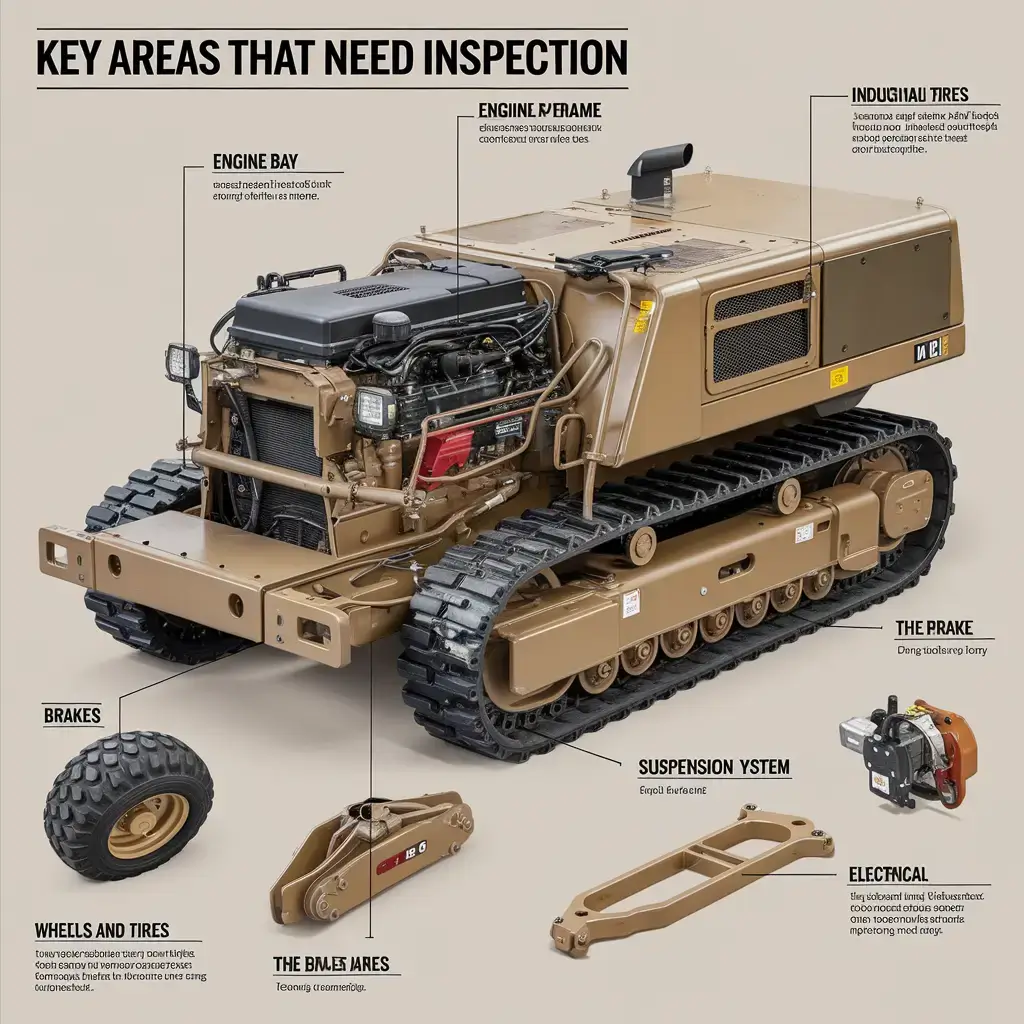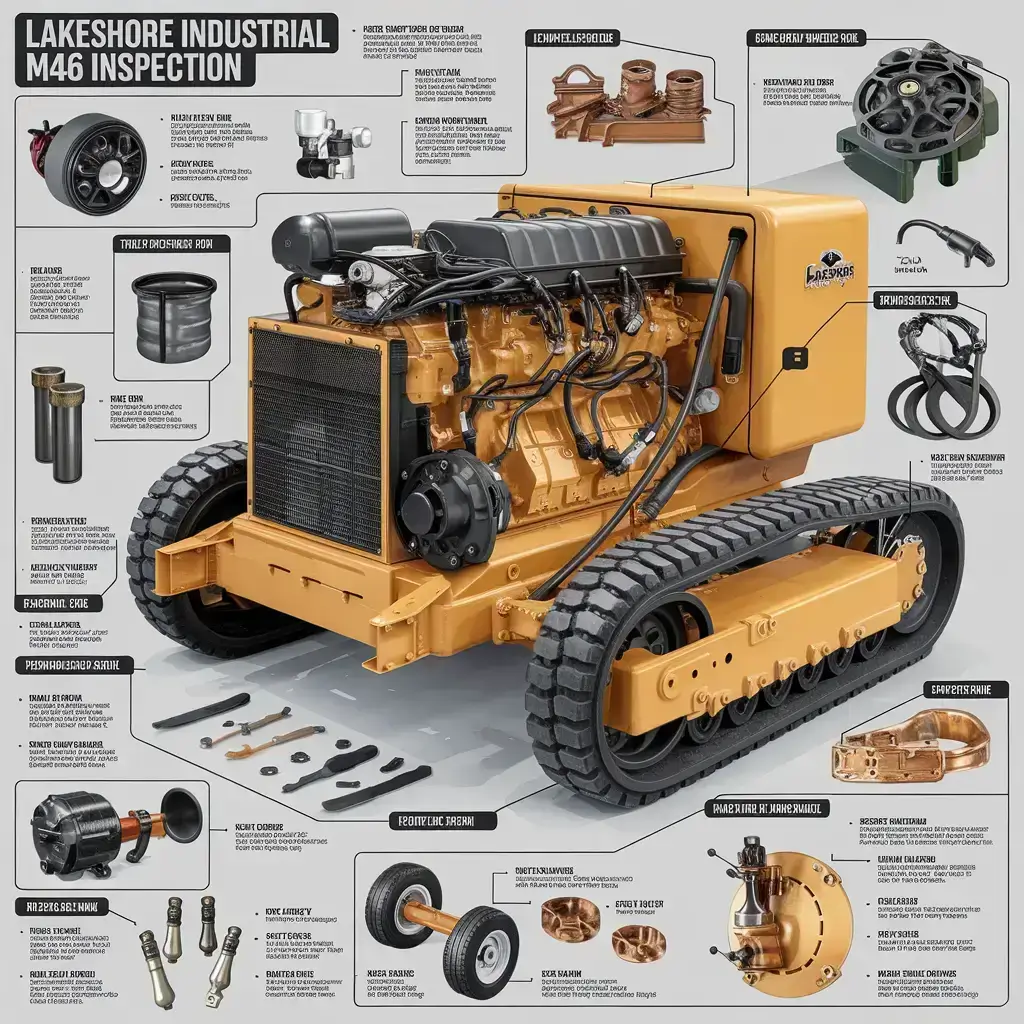Lakeshore Industrial M46 Inspection: A Comprehensive Guide
Industrial machinery needs to be kept in excellent condition to ensure safety and efficiency. One such essential piece of equipment is the Lakeshore Industrial M46. This guide will provide a detailed look at why regular inspections are vital, the specific features of the M46, and a step-by-step guide for a thorough inspection process. Let’s explore everything you need to know about the M46 inspection.
Introduction to Lakeshore Industrial M46
The Lakeshore Industrial M46 is a leading piece of equipment in various industries due to its robust build and versatility. However, like all heavy machinery, it requires regular inspections to ensure optimal performance and safety.
Why is Regular Inspection Important?
Consider this: for example, operating a car without looking into the brake system or replacing the engine oil once in a while would be suicidal. Likewise, not implementing a proper M46 inspection also poses a serious threat that can result in equipment or accidents.
Features of the M46 Model
Understanding the key features of the M46 model can help illustrate why inspections are crucial:
- Key Specifications and Design Elements: The M46 is known for its durable steel frame, high-torque motors, and advanced control systems.
- Unique Features that Set M46 Apart: It has a modular design, which allows for easy repairs and upgrades, and comes equipped with advanced safety mechanisms.
- Applications and Use Cases: The M46 is extensively used in industries like construction and mining, where heavy-duty performance is required.
Knowing these features helps explain why a thorough inspection is not just routine but necessary.
Also Read: Gigabox 15s Battery 15kW in Vietnam: A Comprehensive Guide
Why M46 Inspection is Crucial
Safety Concerns and Compliance
There was a case where a plant skipped the regular inspection of their M46. This led to a major breakdown, causing a significant safety hazard and halting production. This example shows why compliance with safety regulations is vital—not only to avoid fines but to protect the workforce and ensure smooth operations.
Enhancing Operational Efficiency
Regular inspections keep all components in good working order, increasing efficiency. A well-maintained M46 can operate faster and more accurately, minimizing downtime.
Benefits of Regular M46 Inspections
Regular inspections of Lakeshore Industrial M46 offer multiple benefits, Regular inspections of the Lakeshore Industrial M46 offer multiple benefits:
- Reducing Downtime and Repair Costs: Identifying issues early can prevent costly repairs and reduce downtime.
- Improving Equipment Lifespan: Regular checks keep the M46 in optimal condition, prolonging its operational life.
- Ensuring Safety and Reliability: Inspections ensure that all safety features function correctly, safeguarding operators and the equipment.
- Compliance with Industry Standards: Staying up-to-date with inspections ensures compliance with industry standards and avoids legal issues.
Pre-Inspection Preparations
Before conducting an inspection, proper preparation is necessary:
- Checklist for Preparing M46 for Inspection: Ensure the M46 is powered down and secured. Gather all required tools and documents, such as the maintenance manual and previous inspection reports.
- Required Documentation and Tools: Items like a flashlight, magnifying glass, inspection mirror, and notepad are essential for a thorough inspection.
Proper preparation ensures a smooth and effective inspection process.
Key Areas of Inspection for M46

Certain areas of the M46 need careful attention during an inspection:
- Structural Components: Check for cracks, rust, or other signs of wear and tear that could compromise structural integrity.
- Mechanical Systems: Inspect gears, pulleys, and hydraulic systems for proper lubrication and any damage.
- Electrical Systems: Review wiring, switches, and control panels for signs of wear or potential hazards.
- Safety Features: Verify that all emergency stop buttons, guards, and alarms are functional.
Focusing on these critical areas helps identify potential problems early.
Step-by-Step Inspection Process
Here’s a detailed step-by-step guide to inspecting the M46:
- Visual Inspection: Start with a comprehensive visual check for any visible damage, leaks, or wear. Use a flashlight for hard-to-see areas.
- Detailed Functional Tests: Operate the M46 in various modes to test all functionalities and detect any operational issues.
- Reporting and Documentation: Document all findings meticulously. Use a digital tool to store and share these reports with relevant teams.
Following these steps ensures a thorough and accurate inspection.
Common Issues Found During M46 Inspections
During inspections, some common issues may be identified:
- Frequent Mechanical Failures: Issues like worn-out gears or faulty hydraulics are common.
- Structural Wear and Tear: Over time, parts of the M46 may develop rust or cracks, especially if exposed to harsh conditions.
- Electrical Problems: Electrical failures, such as faulty wiring or malfunctioning control systems, are serious risks.
Identifying these issues early can prevent costly repairs and enhance safety.
Best Practices for Maintaining M46 Equipment
To keep the M46 in excellent condition, follow these best practices:
- Regular Maintenance Schedules: Implement a consistent maintenance routine that includes lubrication, part replacements, and cleaning.
- Tips for Prolonging Equipment Life: Ensure operators are well-trained in handling the M46 to prevent undue stress on the equipment.
Following these practices can significantly extend the M46’s lifespan.
Compliance and Regulatory Standards
Adhering to industry standards is critical for legal and operational reasons:
- Relevant Industry Standards for M46 Inspections: Understand the latest safety standards and regulations related to the M46.
- How to Ensure Compliance with Regulations: Regular training and updates for your team on new regulations can help maintain compliance.
Compliance is essential for maintaining a safe and efficient workplace.
Post-Inspection Follow-Up
After the inspection, it’s crucial to follow up on any findings:
- Addressing Identified Issues: Schedule prompt repairs for any detected issues to avoid further problems.
- Scheduling Re-Inspections and Future Maintenance: Plan for future inspections and maintenance to prevent unexpected breakdowns.
A good follow-up plan is vital for maintaining equipment performance and safety.
Frequently Asked Questions (FAQs)
1. What is the Lakeshore Industrial M46 used for?
It’s commonly used in industries like construction and mining for heavy-duty tasks.
2. Why is regular inspection of the M46 important?
Inspections ensure safety, and compliance, and prolong equipment life.
3. What are the key areas to inspect in the M46?
Structural components, mechanical systems, electrical systems, and safety features.
4. How often should the M46 be inspected?
Regular inspections should be scheduled according to manufacturer guidelines and operational needs.
5. What are the common issues found during M46 inspections?
Frequent issues include mechanical failures, structural wear and tear, and electrical problems.
Conclusion and Future Considerations
Regular inspections of the Lakeshore Industrial M46 are essential for maintaining safety, efficiency, and longevity. By understanding the key features, following a step-by-step inspection guide, and adhering to best practices, you can keep your M46 in optimal condition.
Technological advancements, such as AI-driven inspections and IoT integration, could further enhance equipment maintenance. Staying updated with these developments will ensure your operations run smoothly and safely.







